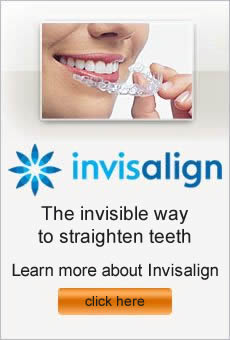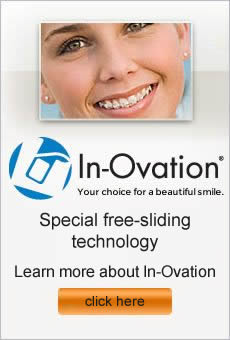While having braces may not seem like a ball of fun, it doesn’t have to create a negative affect on your life. Most people visit their orthodontist every six to eight weeks, finish treatment, and enjoy gorgeous smiles. Sometimes, orthodontic care doesn’t go as planned and you made need to contact the orthodontist for special circumstances. These tips can help you stay calm and handle the situation like a pro.
Know Your Appliance
Understanding the limitations of your braces or retainer can stop you from damaging these devices. With braces, staying away from crunchy or sticky foods can prevent breakage. When you have a retainer, wear the appliance as directed and leave it in the case when not in use.
Assess the need
If you run into a problem, determine how serious the issue is before you act. Call your orthodontist during business hours if something breaks, comes loose, or gets lost. Immediately contact the office when a broken appliance prevents you from opening or closing your mouth, or if you have pain even after taking over-the-counter pain relievers.
Be prepared
Because brackets or wires can break, keep orthodontic wax on hand to protect the area until you can get in to see your orthodontist.
Take precautions
During your time in braces, ask your orthodontist about a mouth guard if you play sports. Also, don’t mess with your brackets or wires because you can accidentally cause problems with the dental appliance.
We care about your smile at our Sherman Oaks, CA orthodontic office – Mehdi Fotovat, DDS.
While wearing braces can give you a stunning smile, most people don’t look forward to the process. Though the end result might be worth it, braces aren’t a lot of fun. These tips will help you get through your orthodontic treatment like a champ.
Get the facts
Find a good orthodontist and have a full evaluation so that you can discover exactly what kind of treatment you need. Don’t be afraid to ask for clarification or get more information if something is unclear.
Review your options
Though many kids and teens still wear traditional braces, other orthodontic options exist for adult and older teen patients such as self-ligating brackets, clear brackets, and Invisalign clear aligners.
Follow directions
Your treatment time will progress on schedule if you wear rubber bands, keep appointments, and completely listen to the orthodontist’s instructions. On the flip slide, you may have to wear the braces even longer if you don’t comply with what the orthodontist says.
Focus on the goal
Remember that your time in braces is temporary and has a definite purpose. After treatment, you will achieve a stunning smile that will provide years of enjoyment. Those one or two years in braces will seem like no time at all.
We care about your smile at our Sherman Oaks, CA orthodontic office – Mehdi Fotovat, DDS.
Often, people decide to seek orthodontic treatment because they want straighter teeth. Usually, your teeth are out of alignment because of a malocclusion, or bad bite. Several different bite issues exist that may cause you to need orthodontic treatment. Your orthodontist will examine your entire mouth and recommend the best course of treatment to give you a straight, healthy smile.
Types of malocclusions include:
Crowding
When you don’t have enough room in your mouth to accommodate your teeth, crowding occurs. Not only do crowded teeth look less attractive, but they also compromise your oral health by making it harder to brush and floss.
Overbites
Also called a deep bite, an overbite is a situation where the front teeth dramatically cover the lower teeth. Without treatment, an overbite can lead to excessive tooth wear.
Underbites
Caused when the lower jaw is longer than the upper jaw, an underbite makes the bottom teeth protrude in front of the top teeth.
Extra Space
If teeth are small or missing, you can end up with too much space. Though this issue is often cosmetic, you should have extra space evaluated by an orthodontist.
Open bite
Usually caused by a habit such as tongue thrusting or thumb sucking, an open bite is when an individual can stick his or her tongue between the teeth while biting down.
Protruding Teeth
Sometimes, the upper teeth come too far forward or the lower teeth don’t stick out far enough, which is called protruding teeth.
It’s time to schedule a visit to our Sherman Oaks, CA orthodontic office – Mehdi Fotovat, DDS.
Anyone can enjoy a straight, attractive smile. Many people assume that orthodontic treatment is just for kids and teens, but that isn’t the case. Approximately one million adults wear braces, suggesting that age shouldn’t influence orthodontic treatment decisions. Celebrities like Tom Cruise, Nicholas Cage, and Gwen Stefani are a few famous examples of adults who chose to straighten their teeth.
The following points might help you make your decision if you are thinking about adult orthodontics:
Crooked teeth can create health issues.
When your teeth aren’t straight brushing and flossing are more difficult, which may increase your risk of cavities. Chewing issues and alignment problems, like TMJ dysfunction, can also arise if your teeth aren’t in the proper position.
Misaligned teeth may contribute to gum disease.
If you have crooked teeth, it is harder to remove plaque, the sticky layer that forms on teeth and gums. Plaque build up often leads to tooth decay, bad breath, and gum disease.
Adults have options for orthodontic treatment.
At one time, metal braces were the only choice for people who wanted a straighter smile. Modern advances mean that adults can attain the beautiful smiles they desire with less conspicuous orthodontic treatments such as ceramic brackets, lingual braces, or Invisalign clear braces.
A flawless smile has benefits.
Not only will your oral health improve, but you will look and feel better than ever with a stunning smile. Improved confidence and a warm presence can help you achieve personal and professional success.
Consider our Orthodontic team in Sherman Oaks California – Dr. Fotovat – Burbank Orthodontist – WebBraces.com
If either you or your child needs braces, you should schedule a visit to an orthodontist. At this appointment, the orthodontist can examine your mouth and make recommendations for treatment. Much of the terminology may seem confusing. The following list of terms should help you understand orthodontic basics.
Arch wire
Attached to your brackets, this metal wire helps shift your teeth into the correct position.
Biomechanics
A term that describes the relationship between the force you apply to your teeth and how they move or change.
Crowding
An orthodontic problem that occurs when you have too many teeth in too small an area and results in overlapping teeth.
Dentition
Often used by dentists and orthodontists, this is a term for teeth, gums, and bone.
Fixed appliance
When orthodontic devices are cemented to your teeth, they are considered fixed appliances.
Interceptive orthodontic treatment
Also called Phase 1 treatment, interceptive orthodontic treatment is often performed on patients 6 to 10 years old. The goal of early treatment is to address issues that respond best to therapy while a child is still growing. A second phase of treatment may be needed later.
Malocclusion
The general term used to describe bite problems.
Palatal expander
Sometimes necessary in orthodontic therapy, a palatal expander will make your upper jaw wider.
Retainer
Either a fixed or removable device, a retainer is an orthodontic appliance that will help keep your teeth in the desired position after you finish corrective orthodontic treatment.
Wax
The clear material placed over braces to keep the metal from irritating your gums and mouth.
Giving our patients something to smile about at our Sherman Oaks, CA orthodontic practice – Mehdi Fotovat, DDS.



